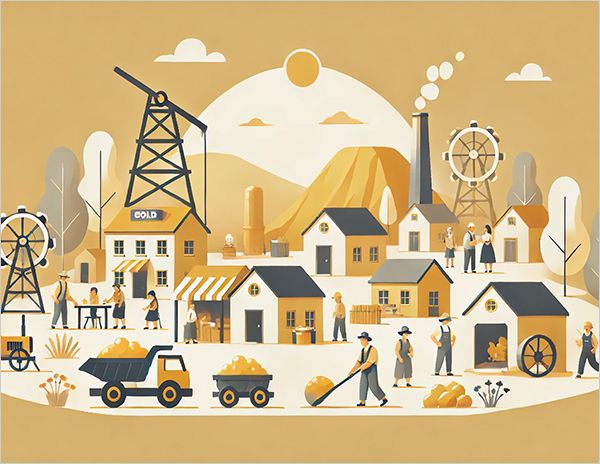
The need for hundreds of new mines in the next decade to keep pace with the global economy and technological trends is a golden opportunity for the mining industry to demonstrate its ability to drive meaningful social impact.
Let’s take the energy transition as an example. According to Benchmark Source - a supply chain intelligence service for the energy transition - 384 new mines will be required by 2035 for batteries and electric vehicles alone. These materials include graphite, copper, nickel, cobalt and lithium.
It’s not hard to see why. An article published in Mining.com last year said that a hydrocarbon powered Honda Accord needs about 40 lbs of copper, compared to 200 lbs for the electric version. Onshore wind turbines require about 10 tons of copper, and for offshore ones, double the amount is needed.
And even though the US is pulling back on anything associated with renewable energy, which might impact energy transition metals demand, most of the rest of the world appears to be ploughing on.
The World Economic Forum reported in April 2025, that 1.2 million electric vehicles were sold in March of this year, 50% more than the same time a year ago. Adoption is widely seen as accelerating as battery makers work out ways to reduce charging times and extend vehicle range.
That’s just one industry. We also have a global arms race heating up that needs lots of metal on top of general demand from the global economy.
Plenty of time
Getting those mines up and running involves extensive logistics, engineering and planning - even more so when they’re in isolated locations. A key part of that planning, which sometimes doesn’t get enough attention, is around establishing good relations with host mining communities. And this should happen long before the first mine worker, digger or haul truck turns up on the site.
These long lead times give mining companies plenty of time to consider host community issues. A report by data and consultancy firm, S&P Global, calculated that gold mines are the fastest to develop taking just over 15 years on average while nickel mines are the slowest at 17.5 years. The quickest countries to get a mine up and running are Laos, Ghana and the Democratic Republic of Congo where they nonetheless still take 10 to 15 years to become operational. Copper and cobalt-rich Zambia is the slowest country to bring a new mine online taking 34 years on average.
Five recommendations
Related to host mining communities, we commissioned a report from FT Longitude called Fueling The Green Transition: The Mining Investment Gap. We made five recommendations for mining companies to make themselves more appealing to institutional investors:
The second recommendation and part of the first one cover the social dimension.
There are numerous established methodologies to guide mining companies towards making their mining projects ‘friendly’ to host communities. An example is the Social Impact Assessment (SIA), which includes industrial projects. The aim is to ensure social consequences are considered, develop strategies to mitigate negative impacts and drive positive outcomes.
Good engagement
The approach to good community relations can be distilled down to six steps:
These steps should be incorporated into the design and engineering of the project from the very beginning. This will create better outcomes for host communities and help mining companies come up with cost-effective solutions and avoid unpleasant and potentially expensive surprises further down the line.
The coming build out of so many mines - many of which will impinge on established communities - is an opportunity for the mining industry to demonstrate to policy makers and investors that it is best in class when it comes to being socially responsible. It is also a chance to prove to its critics that it can bring about beneficial socio-economic change, particularly in poorer host communities.
